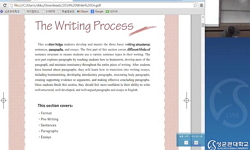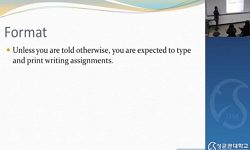The present paper argues for the duration-based analysis to explain the split borrowing pattern of English /s/ into Korean. When the English phoneme /s/ is borrowed into Korean, it is realized as either lax /s/ or tense /s*/ based on its environment: ...
http://chineseinput.net/에서 pinyin(병음)방식으로 중국어를 변환할 수 있습니다.
변환된 중국어를 복사하여 사용하시면 됩니다.
- 中文 을 입력하시려면 zhongwen을 입력하시고 space를누르시면됩니다.
- 北京 을 입력하시려면 beijing을 입력하시고 space를 누르시면 됩니다.

The Duration-based Analysis of English /s/ in Korean Loanword Phonology = The Duration-based Analysis of English /s/ in Korean Loanword Phonology
한글로보기부가정보
다국어 초록 (Multilingual Abstract)
The present paper argues for the duration-based analysis to explain the split borrowing pattern of English /s/ into Korean. When the English phoneme /s/ is borrowed into Korean, it is realized as either lax /s/ or tense /s*/ based on its environment: English initial /s/ occurring in a cluster is mapped onto Korean lax /s/ (English [s] in smile as Korean [s]), whereas English singleton /s/ is mapped onto Korean tense /s*/ (English [s] in sale as Korean [s*]). To account for this split borrowing, two accounts have been proposed: the duration-based analysis and the laryngeal-based analysis. This paper provides a critical evaluation of these two accounts by identifying their problems and limitations. In the end, we argue for the duration-based account over the other by showing how the seeming problems for this approach can be resolved as rather supporting evidence for the role of duration in the split borrowing.
동일학술지(권/호) 다른 논문
-
The Korean Dative Compared with German: A Grammaticalizational Approach
- 대한언어학회
- ( Kyung An Song )
- 2014
- KCI등재
-
Food As a Source Domain of Metaphor in Korean and English
- 대한언어학회
- ( Young Ju Choi )
- 2014
- KCI등재
-
A Corpus-based Study on Korean EFL Learners` Use of Resultive Conjuncyive Adverbials
- 대한언어학회
- ( Jee Woo Kim )
- 2014
- KCI등재
-
A Study on the Relationship Between Multiple Intelligence and Listening Proficiency for EFL Leafners
- 대한언어학회
- ( Sung Ran Koh )
- 2014
- KCI등재





 KISS
KISS






